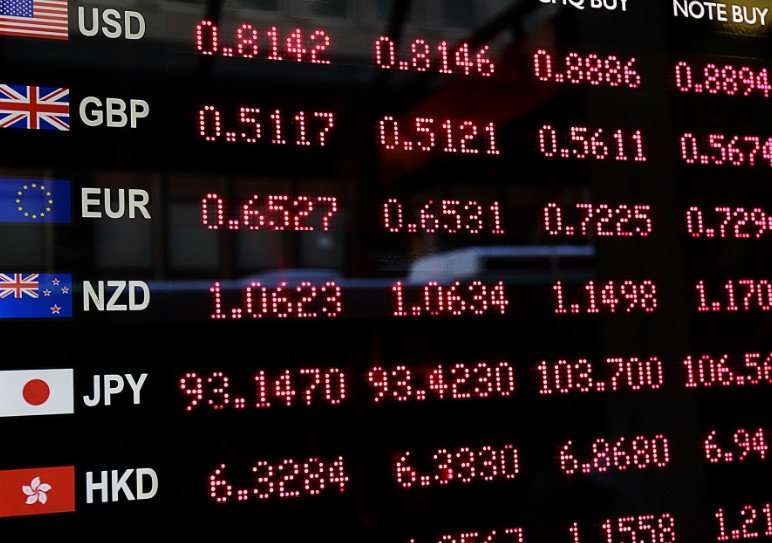The U.S. dollar and euro climbed higher against the Egyptian pound in Wednesday’s late trading at major banks in Egypt. This midweek surge, seen on August 20, 2025, pushed the dollar up by 15 piasters at key state-owned lenders, reflecting broader global pressures and local economic strains.
Currency Pressures Build in Egyptian Markets
Egypt’s banking sector felt the impact as the dollar strengthened amid global market jitters. Traders pointed to rising demand for the U.S. currency ahead of key economic events.
At the National Bank of Egypt and Banque Misr, the dollar closed at 48.55 Egyptian pounds for buying and 48.65 for selling. This marked a clear jump from earlier levels that day.
The euro followed suit, gaining ground against the pound. It traded around 56.38 pounds, up from recent sessions, as European economic data influenced investor moves.
Local experts noted that such shifts often tie to international trends. With the U.S. dollar index hitting 98.393, its best in over a week, the ripple effects reached Egypt’s shores.
This comes after a period of relative calm, where the pound had shown some strength earlier in the month. Yet, Wednesday’s trading reversed that briefly, raising questions about stability.
Global Factors Driving the Dollar’s Rise
Anticipation around Federal Reserve Chair Jerome Powell’s speech at the Jackson Hole symposium played a big role. Investors braced for hints on U.S. interest rate cuts, boosting the dollar worldwide.

The dollar index rose 0.4 percent in just two days, signaling caution in global markets. This strength against major currencies like the euro added pressure on emerging markets, including Egypt.
In Egypt, the timing aligns with concerns over external debt. The country’s five-year credit default swaps climbed to 449 basis points, up from recent lows.
This metric shows higher perceived risk for Egypt’s bonds. It reflects worries about funding needs and foreign currency reserves.
Recent data highlights Egypt’s foreign reserves grew to about 49 billion dollars by mid-2025, a 5.4 percent increase. Still, ongoing challenges like import demands strain the pound.
Impact of Investor Sell-Offs on Local Debt
Arab investors pulled back from Egyptian treasury bills, adding fuel to the currency pressures. Official figures show sales exceeding 6.2 billion pounds on Tuesday alone.
This followed net sales of 5.8 billion pounds the previous week. Such moves increase dollar demand in banks, as investors seek safer assets.
The sell-off points to broader unease. With Egypt relying on foreign inflows, these shifts can quickly affect exchange rates.
Experts suggest this could lead to more volatility if trends continue. Banks are monitoring closely to manage liquidity.
- Treasury bill sales by Arab investors reached over 12 billion pounds in the past week.
- This activity directly boosts demand for dollars and euros in local markets.
- Similar patterns in past months have led to temporary pound weakenings.
Exchange Rate Trends in Major Egyptian Banks
Banks across Egypt reported varied but upward trends for major currencies. Here’s a snapshot of closing rates on August 20, 2025:
| Currency | Bank | Buy Rate (EGP) | Sell Rate (EGP) |
|---|---|---|---|
| USD | National Bank of Egypt | 48.55 | 48.65 |
| USD | Banque Misr | 48.55 | 48.65 |
| EUR | Central Bank Average | 56.37 | 56.45 |
| USD | Commercial International Bank | 48.50 | 48.60 |
These figures show consistency in the surge at top institutions. Smaller banks saw similar gains, with some euros reaching 56.52 pounds for selling.
Traders expect fluctuations to continue into Thursday. Global news could sway rates further.
Broader Economic Implications for Egypt
Egypt’s economy faces headwinds from these currency moves. A weaker pound raises import costs, affecting everything from food to fuel.
Inflation remains a concern, with recent devaluations pushing consumer prices higher. The central bank has hiked rates in the past to curb this, now at 27.75 percent.
Positive notes include stronger reserves and ongoing reforms. Egypt’s deal with international lenders aims to stabilize finances.
Yet, the midweek surge underscores vulnerabilities. Analysts predict the pound could hover around 48 to 49 against the dollar through late 2025, depending on global cues.
Businesses and households feel the pinch. Higher exchange rates mean pricier foreign goods, squeezing budgets.
Looking Ahead to Currency Stability
Forecasts vary, but some see the pound rebounding if U.S. policy signals ease. Others warn of prolonged pressure without more foreign investment.
Egypt continues efforts to attract funds, including infrastructure projects. Success here could bolster the currency.
In the meantime, banks advise clients to watch rates closely for transfers and trades.
What do you think about these currency shifts? Share your thoughts in the comments below and pass this article along to others interested in Egypt’s economy.
